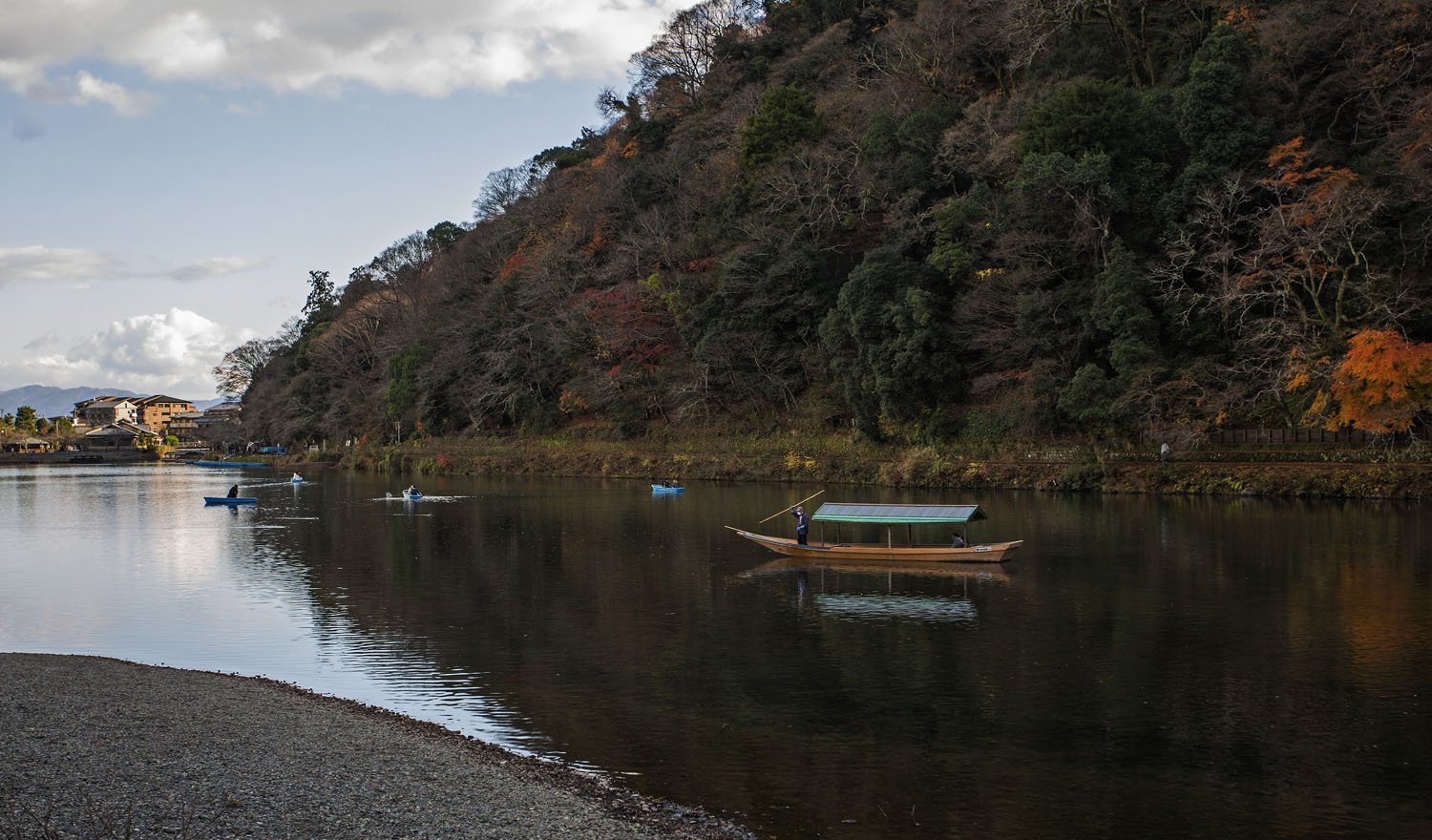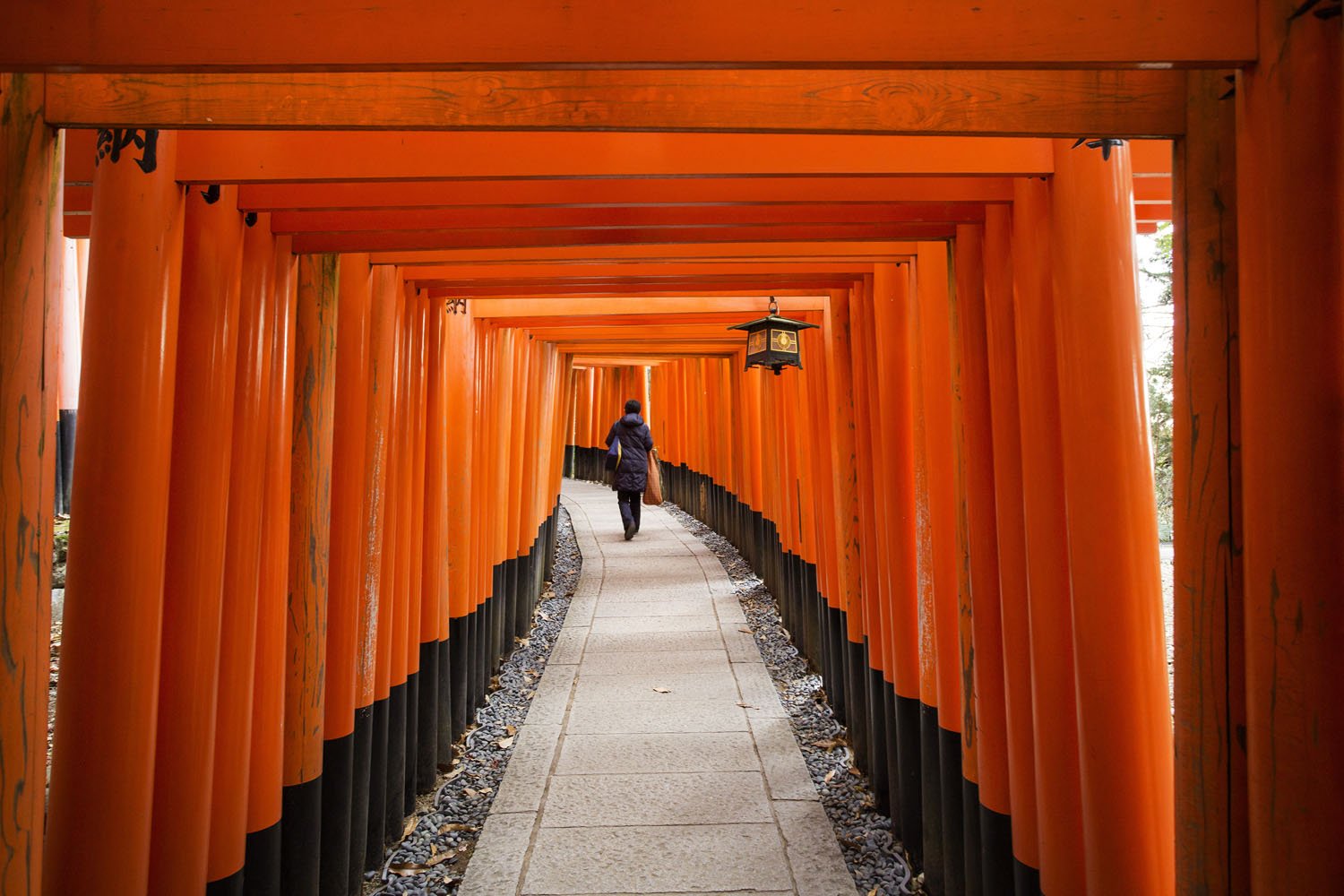The next morning was one of those, “Ughhh I guess I’ll wake up early” to see the Arashiyama bamboo forest, one of the ‘must-see’s of Kyoto. So obviously it will get pretty crowded. I saw some photos of it during cherry blossom season, it looked a line to get into a BTS concert. But at 8 am, on weekday, in the off-season, there were only a couple other people around. Very cool place to walk around, super peaceful.
There’s also a bunch of temple around there (of course) so I spent the next few hours checking them out. They’re all walking distance too, and it was another beautiful day. When it was cloudy/rainy every day when I first arrived in Tokyo I thought I might be in trouble doing Japan in December, but the weather was working out pretty well. Once again temple had something different going on – a cemetery built back deep in the woods, a moss garden, and one place had all the maple leaves recently fallen, making the entire ground completely red. Beautiful. The only place the leaves looked better off the trees!
In the evening I visited the Fushimi Inari Shrine, one of Kyoto’s oldest and most historic landmarks, dating back to 711. Inari is a traditional god of food and rice. In the 1500’s the thousands of torii gates were added along the pathway up the sacred mountain, and that’s what most tourists are there to see. It really is quite impressive. The only thing that bothered me was there was no view from the shrine at the top! Its just trees! For some reason I assumed I’d be watching the sunset over the city, but that was not the case. I had some nice post sunset colors back at the bottom though.
Next it was off to the very touristy downtown geisha district, which surprisingly still has geishas around and you see them flitting from one building to another every once in a while. In two nights I saw three in total, so it’s not like they’re everywhere. It felt too rude to snap a photo of them from the front, but I did take some photos after they walked past. Geisha literally means art-person and it was their job to entertain guests with song and dance, as well as be skilled at calligraphy, teahouse rituals, and the art of conversation. They are mostly found nowadays in high end teahouses and restaurants called ryotei – where the private tatami rooms are used booked by business men or politicians, by referral only, and served by geishas. I would not be experiencing this part of the Japanese experience!
My meal for that night would be a little lower end, a large selection of meats on sticks, kushiyaki. Still very tasty!
Next day was a trip to Nara (which means deer in Japanese) the capital of Japan from 710-784. It’s most famous temple has a Buddha hall, and whatever specific type of Buddha is in there, it’s largest form of it in the world. So I guess that kind of makes it a big deal! And then there’s all the deer scampering around. In Shintoism deer are holy animals, helpers of the Gods, and there’s hundreds of them in the park, in the streets, waiting in front of shops etc. They’re fully capable of feeding themselves, but many are lazy and prefer to go after the deer crackers from the tourists that you can buy from many different streetside vendors.
Although they’re tame, they get quite aggressive when the crackers come out. Some of the males, who already have had their horns sawed off, will keep butting you with their head until you give them one! It’s better the keep the packet of crackers in your pocket and discretely hand out some here and there rather than take out the whole thing and start a feeding frenzy. I saw a few people just throw their whole pack on the ground because they got an uncomfortable amount of attention from the deer! So that’s the fun, unique thing to do in Nara, hang out with the deer.
they’re coming!


































